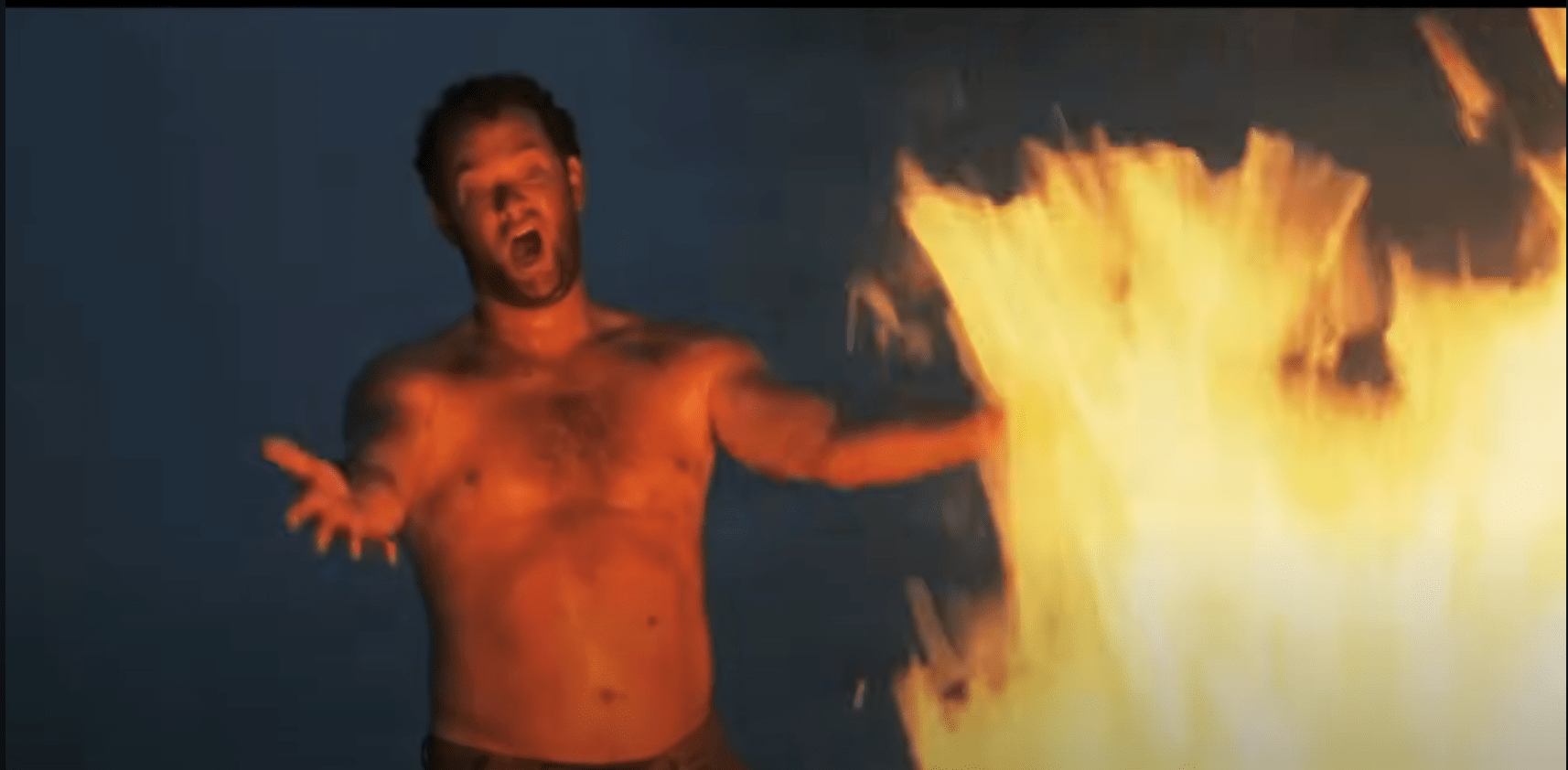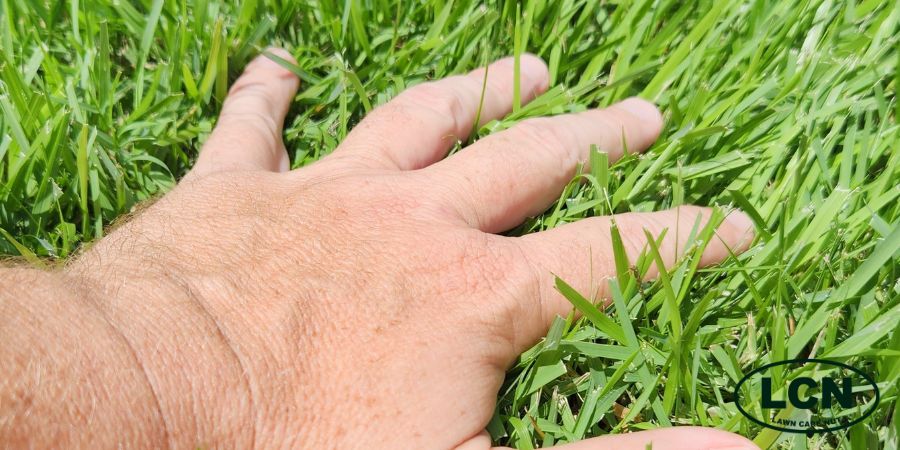Should I Seed My Lawn This Fall?
- "The Lawn Care Nut"September 21, 2024
This time of year, my world, in the online world of “The Lawn Care Community,” the dominant conversation in the United States right now is around fall aeration and seeding of cool-season lawns. We lawn care nuts, we love to sling grass seed and track our progress online sharing updates with friends through the process.
And I totally understand why: there is something super satisfying about taking dry seed from a burlap bag, sewing it into your ground, your lawn, your soil, and then setting aside the time for watering 2-3x per day for 21 days. Within 45-60 days, you can have a lush, vigorous carpet of green grass that you created!
Thinking about this always reminds me of that scene from the movie Castaway, where Chuck Noland (Tom Hanks), in the first hours of his ordeal he expends immense energy and time working on getting a fire started. Late into the day, he is successful, and to celebrate his roaring fire that will undoubtedly help him survive not only for warmth, but for a lift in spirit, he proclaims, “Look what I have created! I have made fire!”

This is how it feels to grow your own lawn from seed!
I can guarantee you that come early November this year, there will be thousands of lawn care nuts standing out front of their homes at 7AM, watching their sprinklers go as they drink coffee, and they will all shout to their green creations in the suburbs.
“This is my lawn, that I have birthed from my ground, with mine own hands in mine own soil, fertilized and hydrated to perfection, my beautiful lawn!!”
This is not a joke, it happens every season. Growing your own lawn (or rehabilitating an ugly one) is one of the greatest accomplishments a homeowner can achieve, and I’m here for it!
Cool-Season Grass Types
Now, in case you’re new here, when I talk about “cool-season grasses,” I’m talking about the primary grass types grown across the middle of the US and northward. The primary 3 you will come across are Kentucky Bluegrass, Perennial Ryegrass, Turf-type tall fescue, and then fine fescues.

The majority of cool-season lawns are a mix of 2 or even all three of these. Cool-season lawns are green in spring and fall, but in hot summers, they can go dormant and thin out. This necessitates an overseeding to help fill in the thin spots. That’s because the greatest weakness of cool-season turf is that it doesn’t spread. Cool-season grasses are known as “bunch-type grasses.”
Warm-Season Grass Types
Warm-season grasses, on the other hand, are a completely different plant with an aggressive growth habit anchored by the voracious spreading of rhizomes and stolons, commonly referred to as “runners.” These runners spread far and wide and grow in and amongst one another weaving a dense shag of turfgrass. The thicker they get, the tighter knit together the runners become.
The most common warm-season turf types found in the United States are bermudagrass, St Augustine grass, zoysia, centipede, and Bahia.
Warm-season turf types have adapted this aggressive nature (sending out runners) to better choke out competition (weeds) over the entire season. You folks up north with cool-season grasses all get a little bit of a reset button every year in winter. Especially those of you who have long-term snow cover during winter. That long winter can erase a lot of things that haunted you the previous season. It also shuts off all the bugs, diseases, and weed growth. Winter is like when Han Solo got frozen in Carbonite at the end of The Empire Strikes Back. Everything just stops until the next chapter.
Whereas down south, the lawn may sleep (go dormant), but the soil never does. I tell folks that the forest and the jungle are always trying to reclaim the land. Knowing that the soil never sleeps means that neither do the insects, diseases, or weeds. They threaten our domination year-round.
This is where the aggressive nature of our turf is a benefit. First off, because it can compete against weeds. A thick stand of aggressive turf will reduce weeds greatly, even in the toughest rain-soaked seasons here in South Florida. Even if it goes dormant in winter, a thick stand of dormant turf is going to choke out weeds by blocking sunlight and taking space. Never underestimate the value of having a thick lawn.
On top of that, my St Augustine lawn can sometimes get knocked back during the season by disease here but I know that if I keep it properly (frequently mowed) and well fertilized, it will grow back and fill in, sometimes in just a couple weeks.

Zoysia makes a dense turf and is a great barefoot grass.
All warm-season grasses can do this. Bermuda grass is an aggressive spreader as well and is known to be almost indestructible. As long as it has sunlight, it will regrow and take ground when damaged. When other grasses get tired after a long summer, Bermuda keeps on spreading and taking back over. It spreads with both rhizomes and stolons.
Centipede grass also has some spreading ability but is not quite as aggressive. Same with Zoysia. It makes an extremely dense matt of turf that is excellent at choking out weeds. This is the number 1 way to reduce your use of pesticides as well - keep a dense stand of vigorous turfgrass all season long.
Bahia grass, found mostly along the Gulf Coast and Florida, is the least aggressive (sorry, y’all!)
To give you an idea of how fast and aggressive St Augustine runners can be, here is a video where I show you the results I got in just a few months on a St Augustine lawn that was decimated by chinch bugs the season before. Even in the midst of a drought that year, the St Augustine completely grew back together in less than 5 months.

St Augustine stolon. These can grow to be several feet long.
What was the Secret? Nitrogen.
Next to sunlight and water, nitrogen is, in my opinion, the most important part of the strategy in encouraging and fueling a warm-season lawn to thicken up and fill in bare spots. Milorganite has always been a part of my strategy in spring and fall. It brings slow-release nitrogen that lawns love, plus a nice deep dark blue-green color brought on from the chelated iron.
This is why we don’t seed warm season turf in the fall time, or really, anytime. There should be no need. If you have some turf present and sparse throughout, why make it start over from seed? Instead, encourage the existing turf that is already there to start moving and spreading! If you are looking at your Bermuda, zoysia, St Augustine, centipede, or Bahia lawn right now and it’s thin and full of weeds, instead of burning it all down and reaching for a bag of seed, grab some Milorganite and throw that down. Make sure to water ½” every couple of days if you are not getting rain, and then mow often.
Now, as I am writing this, it’s mid-September, and the season is winding down. Most of you still have time to get one or two more applications of fertilizer down but probably not too much more. The Achilles heals with warm season turf is sunlight. It needs a lot of sunlight for photosynthesis. It cannot stand shade. And what’s happening here at the end of the season is worse than shade, it’s a total lack of sunlight. The closer we get to winter, the shorter the days are. These shorter days mean less fuel for our turf, and therefore, it begins to slow down naturally.
You can still make progress, but it won’t be as fast as what you see next year in later spring when you pick back up and keep pushing to get that lawn thick - no seed required!

